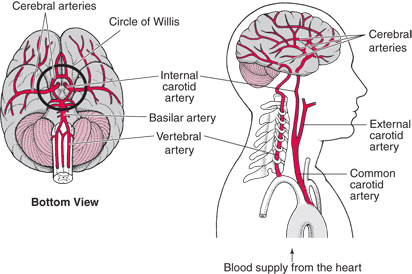The Cerebral Vascular System
Published .

The brain is one of the most highly perfused organs in the body. It is therefore not surprising that the arterial blood supply to the human brain consists of two pairs of large arteries, the right and left internal carotid and the right and left vertebral arteries. The internal carotid arteries principally supply the cerebrum, whereas the two vertebral arteries join distally to form the basilar artery. Branches of the vertebral and basilar arteries supply blood for the cerebellum and brain stem. Proximally, the basilar artery joins the two internal carotid arteries and other communicating arteries to form a complete anastomotic ring at the base of the brain known as the circle of Willis, named after Sir Thomas Willis who described the arterial circle (circulus arteriosus cerebri). The circle of Willis gives rise to three pairs of main arteries, the anterior, middle, and posterior cerebral arteries, which divide into progressively smaller arteries and arterioles that run along the surface until they penetrate the brain tissue to supply blood to the corresponding regions of the cerebral cortex.

